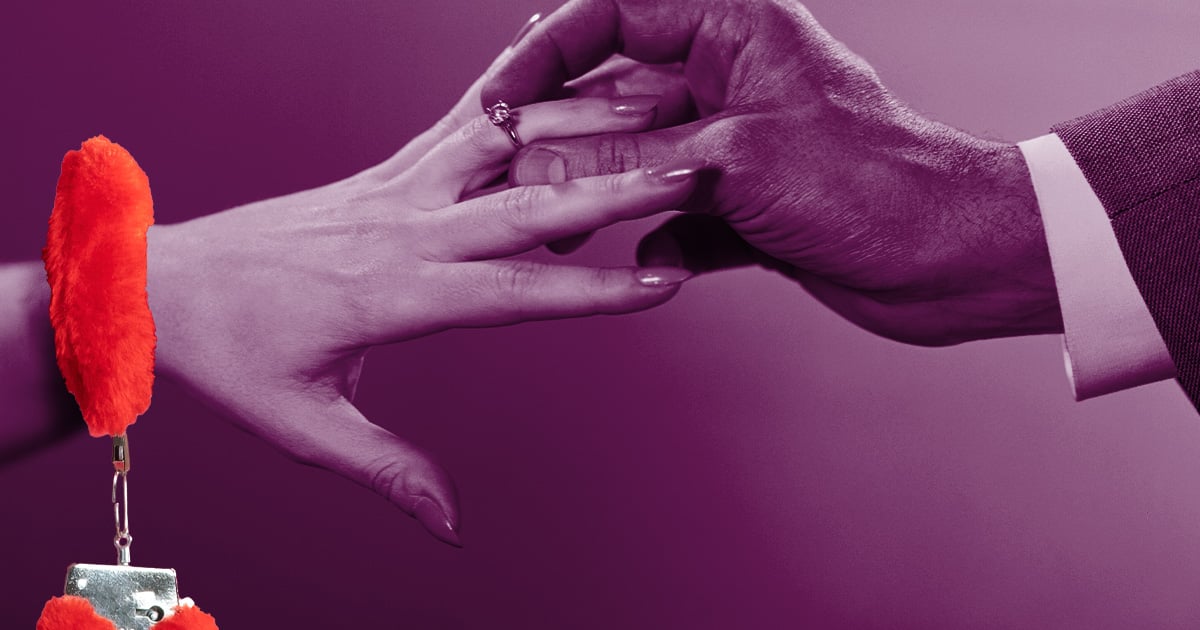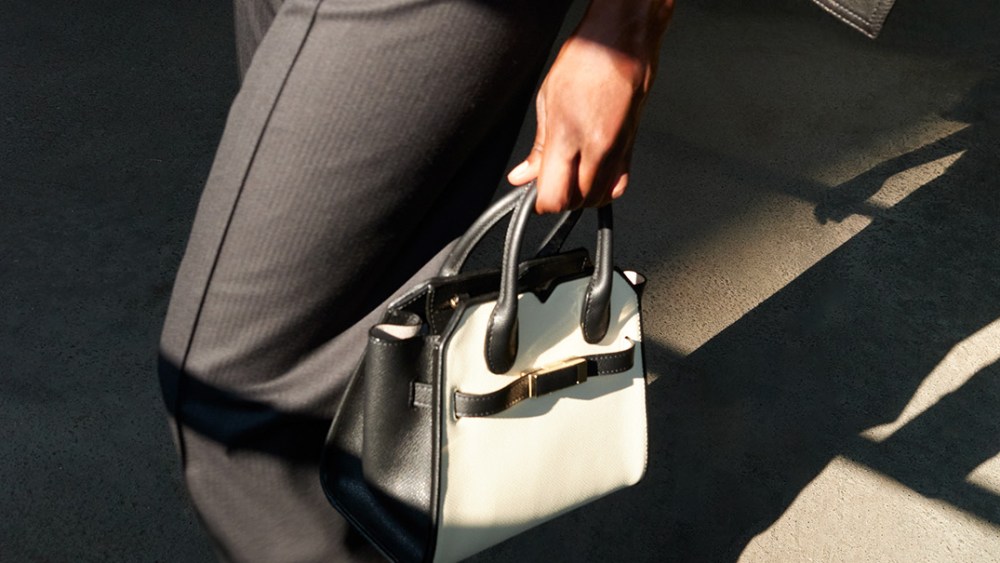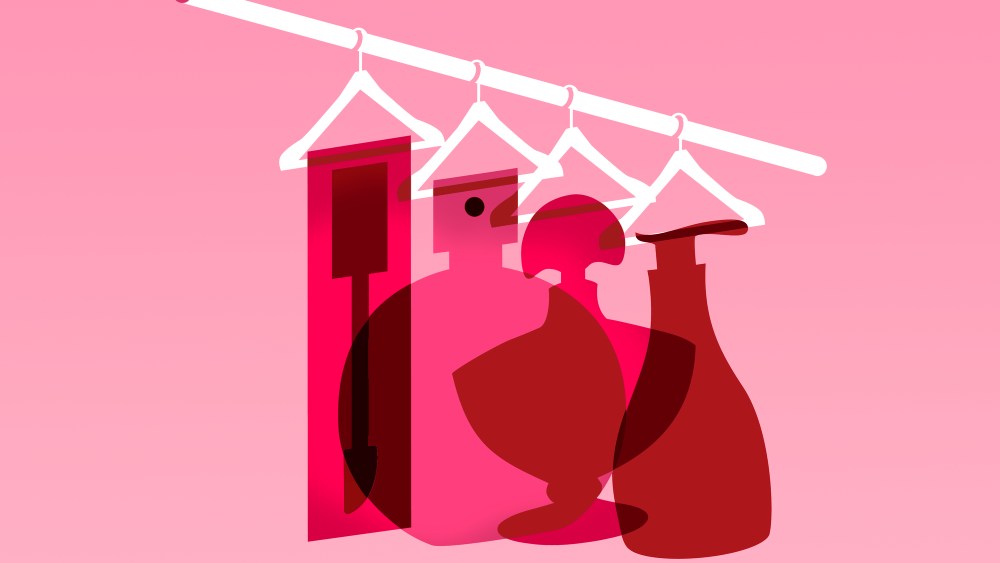Forget the white dress and vanilla vows. For a growing number of couples, the walk down the aisle includes collars, contracts, and curated rituals of power exchange. Kink weddings – ceremonies that center BDSM dynamics, fetish fashion, and nontraditional forms of devotion – are redefining what it means to say “I do.”
Whether it’s a dominant pledging to protect their submissive, a daddy making vows to their little girl, or a polycule sealing their bond in latex and lace, these unions blend sacred commitment with radical erotic honesty. But beyond the spectacle lies something tender: a community reclaiming ritual on its own terms, where consent is the cornerstone and love is anything but performative.
Lina Dune, a kink writer and educator behind Ask a Sub, had two wedding ceremonies – one more traditional than the other. The first was held during the pandemic in front of a small group of friends at an Airbnb in Laurel Canyon, CA. She and her partner have a dominant-submissive relationship and referenced it in their vows, but the ceremony wasn’t explicitly about the kink elements of their relationship.
The second came a year later and was held in a Gothic church. “We’re into religious and blasphemy play, so from the beginning of wedding planning, it amused us to get married in this setting,” she says. “We found an open and affirming church community and did what appeared to be a completely vanilla ceremony, but the subversion of the outward tropes almost felt more kinky than the first ceremony.”
“People want to have a wedding that authentically reflects who they are.”
According to Dune, taking communion while kneeling was an especially memorable moment. They also took photographs on the church altar after their guests had gone outside, and she sat at her husband’s feet, looking up at him. “Our videographer nervously called out to us, ‘Um, it’s kind of looking a little . . . submissive?’ and we burst out laughing, gently telling her that was the point,” she recalls. They also exchanged letters to honor their “paper anniversary” – their first anniversary – and in them, made references to their dom-sub dynamic and used their private means of address for each other.
Dune and her partner are far from alone in realizing these nontraditional ceremonies. Ariel M. Stallings, publisher of Offbeat Wed, a website dedicated to alternative weddings, features kink and polyamorous weddings on her site and has seen an increase in folks having them in the last decade. “People want to have a wedding that authentically reflects who they are, ensuring that there are sometimes small or sometimes large references to their kink dynamics as part of their commitment ceremonies, whether that’s a wedding or kind of a standalone non-legally-binding commitment ceremony,” she says.
For example, at collaring ceremonies, instead of exchanging rings, couples use a collar to embody the relationship. As Stallings sees it, “More people are willing to share [their kink dynamics], and even some want to model it so others feel safe talking about it.”
Arielle Greenberg, a writer, had two wedding ceremonies, like Dune. One was a family-friendly wedding in her hometown, and the second was a sex-positive ceremony for their kink and nonmonogamy community. The second wedding started with the song “Leather and Lace” by Stevie Nicks and Don Henley, and the vows included references to Prince, a sex-positive artist, and their dominant-submissive dynamic. “The officiant for both weddings was the same, and we adapted her approach to suit each event,” Greenberg says.
The second ceremony diverged from traditional norms even more: Greenberg and her partner made out with friends in a circle, symbolizing their sexual adventuring. They also celebrated with a cuddle pile, emphasizing the importance of honoring their nontraditional sexuality and the support from their kink community friends. Meanwhile, her partner smoked a cigar, which is a kink community standard for asserting dominance. For Greenberg, these elements were “a way to honor and celebrate our nontraditional sexuality and relationships.”
And while it might seem like planning two separate ceremonies takes a lot of work, Dune believes it pays off – it allows you to choose what you really want. “I think there is so much pressure on weddings to be ‘for’ everyone around you, from in-laws to distant relatives to your parents’ friends,” she says. At the end of the day, kink weddings give people the opportunity to affirm total consent while celebrating who they are – an embodiment of kink itself.
And even if you don’t have an entirely separate kink wedding, there are still ways to integrate kink elements more subtly. You could incorporate handfasting, for example, which involves binding the couple’s hands together with ribbon or rope. And Dune has simple advice for anyone looking to make their wedding more authentic to their kinky selves: no matter the format, she says, “there are always ways to subtly kink-ify vows.”
Sara Radin is a writer and publicist based in Philadelphia. Her writing on internet trends, style, youth culture, mental health, wellness culture, and identity has been published by The New York Times, Glamour, Self, Teen Vogue, Refinery29, Allure, PS, and many others.




